|
Maybe these pieces were found
in Fredericksburg, but they are the remainder of a set of suspenders,
not tourniquets. |
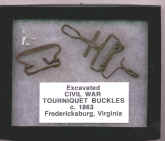 |
| Folding tables of this sort are
often offered as Civil War amputation tables. They are, in fact,
undertaker's cooling boards (tables), and they were used at a time when
funerals were held at a private residence. They date from the 1880s
through the1940s. Such folding boards will sometimes have holes
drilled through the top or have a caned top. These surfaces
allowed for a better flow of air cooled by a block of ice placed under
the board. Some will also have brackets that pull-out from either
end and fix vertically. The brackets were used to suspend a cover
over the body and ice to contain the cooled air. Examples
without the holes may have been intended for home embalming only.
A common maker is Gleason of Brockport, New York, and one of their
boards with an 1880s patent date is in the upper picture. The
brackets are not extended. The Gleason ad shows a board with a
cover held by the brackets and a second view of a collapsed board in its
carrying configuration. I once had someone tell me that he had a
pre-Civil War folding amputation table and that it had a metal maker's
label with the patent date of 1832. I told him that this was
unlikely, but he insisted and had the piece in his van out in the
parking lot. I went to take a look. Sure enough, there was a
maker's tag...the date was 1932! |

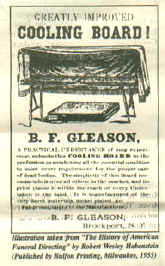 |
| A silver papboat in the style of
c. 1800. This is a reproduction sold through the New York
Metropolitan Museum of Art. Note the MMA markings on the
base. |
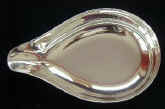
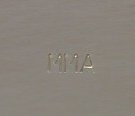
|
| Offered as a medical clamp, this
is a piece from a meat carving dinner set and was used to hold a joint
of lamb. The rather cheap bone handle is monogrammed (not shown in
photo). |
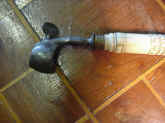 |
| This bivalve nasal speculum must
have been a real puzzler to its seller, who called it a catheter
remover. |
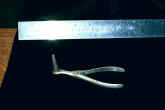
|
| Offered as a Civil War steward's
medical box, this is simply a post Civil War case with the interior
divided into four sections. It may have been used as a traveling
document case. A typical feature of true medical cases will be evidence
of spilled medications in the interior. This case shows no signs
of any spillage. |
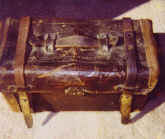
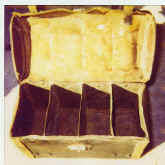
|
| This leather box was described as
a Civil War medical box. The leather case originally held harness
repair equipemnt and is of the Indian War period. |
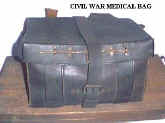
|
| An early twentieth century Hey's
saw described as being of the Civil War period. Note that the
instrument is all-metal, including the handle, and plated. These
together are not characteristics of surgical instruments until the
1890s. |
 |
| This mallet dates from the early
twentieth century, not from the Civil War. Note the plated metal
bands. |
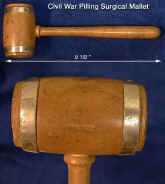
|
| Ivory pieces such as this are not
medical tongue depressors. Rather they are letter openers.
Whale bone corset stays are also seen described as tongue depressors. |
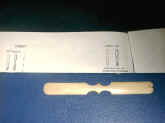 |
| The quality of the transfers and
the color of the borders give this piece away as a reproduction.
Note that the crazing seen in the finish is not a result of age; the
crazing appears during the firing. |
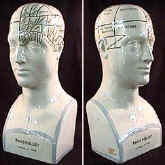
|
| Antique items dealing with
medicinal leeches are in great demand. This porcelain box was
described as a leech carrier due to the holes in the lid. Lots of
things have holes in their lids besides true leech carriers. This
is a toothbrush box. Note the cradle inside the base. |
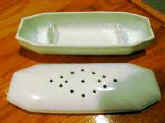 |
| A set of early 20th century
fraternal order chaplain's shoulder boards which were described as a set
of Civil War hospital chaplain's boards. |
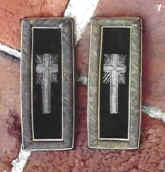
|
| Civil War medical saddle bags are
a rather rare commodity. However, saddle bags such as that shown
here are very common. In spite of a patent date of 1870 on the
large flap, this piece was dated to the Civil War. A clue other
than the patent date is the use of nickel-plated metal. |
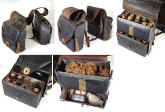 |
| This common glass spirit burner
and top were offered as a bloodletting cup and heating lamp. |
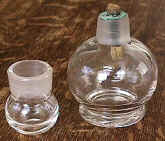
|
|
|
|
|
|
|
|
|
|
|
|
|
|
|
|
|
|
|
|
|